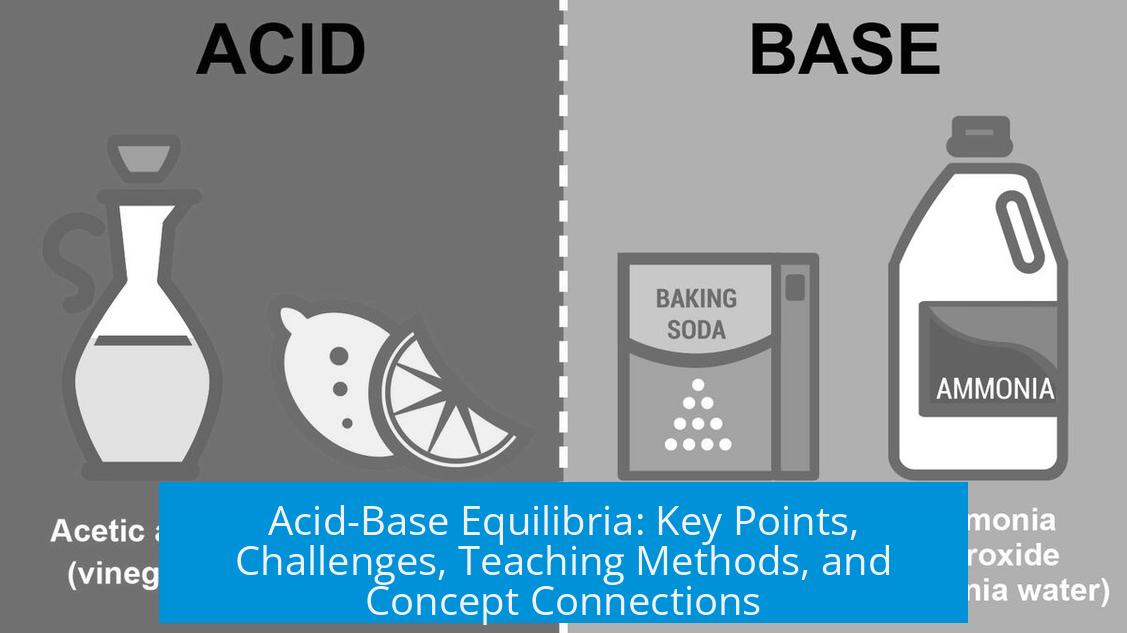Understanding Acid-Base Equilibria
Acid-base equilibria describe the balance between acids and bases in solution, dictating the pH and chemical behavior of the system. It is a central topic in general chemistry, analytical chemistry, and biochemistry courses.
Conceptual Challenges in Learning
Students often struggle with acid-base equilibria. Difficulties arise mainly due to weak algebra and logarithm skills that are necessary to grasp pH calculations and equilibrium concepts.
Instruction time is frequently inadequate. Typical courses devote only a few lectures and labs to pH, buffers, and titration curves, which limits depth and practice.
Effective Teaching Techniques
- Graduated problem sets: Start with simple problems involving strong and weak acids, followed by titration curves to build foundational skills.
- Henderson-Hasselbalch equation: Introduce it after initial concepts. This equation links pH, pKa, and concentrations and clarifies the logarithmic relationship involved.
- Buffers and buffer capacity: Once students understand initial concepts, teaching shifts to buffers, focusing on how they resist pH changes and their practical importance.
- Repetition: Regular practice and review of solutions are vital. Problems need not be overly complex but must be repetitive to reinforce understanding.
Connection to Broader Equilibrium Concepts
Acid-base equilibria serve as a gateway to general chemical equilibrium principles. Correctly writing chemical reactions is essential, as errors in this step lead to incorrect conclusions.
This subject also exemplifies how systems respond to stresses and change, concepts central to equilibrium studies in chemistry.
Summary of Key Points
- Acid-base equilibria explain pH and chemical balances in solutions.
- Student difficulties link to weak algebra and limited instruction time.
- Scaffolded problems help build understanding progressively.
- The Henderson-Hasselbalch equation visually demonstrates pH’s logarithmic nature.
- Regular practice and correcting reaction writing are essential for mastery.
- Understanding acid-base equilibria supports grasp of broader equilibrium dynamics.
What makes acid-base equilibria difficult for students to understand?
Many students struggle due to weak skills in algebra and logarithms. The abstract nature of pH and equilibrium also adds to the challenge. Limited instructional time means concepts may not be fully absorbed.
How can the Henderson-Hasselbalch equation help students grasp acid-base concepts?
This equation shows the logarithmic relationship of pH visually. Introducing it at the right point helps students connect math with chemical behavior, making buffer calculations clearer.
Why is repetition important when teaching acid-base equilibria?
Repeated practice with problems reinforces understanding. Frequent review helps students avoid common mistakes and deepens their familiarity without needing overly complex questions.
What role do buffer solutions play in acid-base equilibria studies?
Buffers resist pH changes by neutralizing added acids or bases. Teaching buffer capacity after basic acid-base concepts helps students see practical applications of equilibrium principles.
How does correctly writing chemical reactions impact solving acid-base problems?
Writing reactions accurately is essential for correct problem solutions. Errors in reactions can lead to misunderstandings of the equilibrium and wrong pH or concentration results.




Leave a Comment